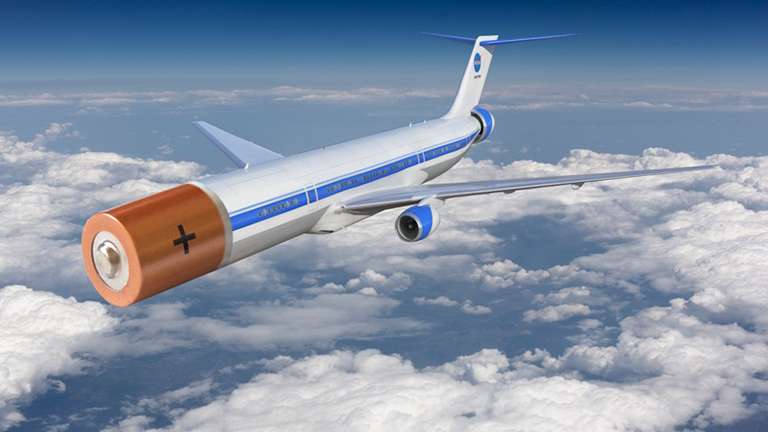The aviation sector is one of the most significant contributors to climate change, accounting for 3% of the EU’s total greenhouse gas emissions, and more than 2% of global emissions. With increasing globalization, and increasing standards of living across the world, by 2020 global international aviation emissions are projected to be around 70% higher than in 2005 (EU, 2019). With legislation already in place to combat these rises, and future legislation possible, this not only increases costs for the airlines but also ultimately the end consumer. With a globalized world and many companies relying on international air travel as part of their operations, a future of unaffordable flights seems terrifying. Here the future of electric commercial planes seems almost dystopian, however developments are gaining momentum with a predicted 200 electrically-propelled aircrafts in production by the end of 2019 (Roland Berger, 2019). Electrified Aircraft Propulsion (EAP) is the use of propulsors (propellers or fans) driven by electric motors to propel aircraft ranging from air taxis to subsonic transports (NASA, 2019). This means airplanes do not have to be solely reliant on fossil fuels, using a distributed electric propulsion system, swappable battery packs with advanced cell chemistry and high aspect ratio wings for energy efficient flights (Roland Berger, n.d.). This opens the industry for new business models, not only reducing the carbon footprint of flying, but also democratizing access to flying worldwide. These planes promise to not only reduce CO2 levels, but are also quieter, safer and with lower maintenance costs. Startup Wright Electric has already teamed up with Easyjet with a vision for electric propulsion for all short flights to be zero emissions within 20 years. To achieve this, there are several technology hurdles to overcome including battery density, efficient electrical systems, system integration and regulation which enable these new systems. Still this technology has a truly disruptive potential, changing both the incumbent travel industry, as well as introducing new segments such as air taxi’s (Roland Berger, n.d.).
References:
EU. (2019). Reducing emissions from aviation. Available at: https://ec.europa.eu/clima/policies/transport/aviation_en
NASA. (2019). Electrified Aircraft Propulsion (EAP). Available at: www1.grc.nasa.gov/aeronautics/electrified-aircraft-propulsion-eap/
Roland Berger. (2019). Electric propulsion is finally on the map. Available at: https://www.rolandberger.com/en/Point-of-View/Electric-propulsion-is-finally-on-the-map.html
Roland Berger. (n.d.). Aircraft Electric Propulsion: Electric flight just over the horizon. Available at: https://www.rolandberger.com/en/Insights/Global-Topics/Electric-Propulsion/


Hi Ronja!
Thanks for sharing this interesting article on a rather hot topic. With more and more attention for the environment and specifically the preservation of the world we’re living in, it’s also time to focus on the aviation sector. In my opinion, there is not enough attention for the pollution created by this sector. Cheaper airfares, thanks to more competition and space insides airplanes, are making flying more accessible (Rosen, 2017). But this also means more people are using airplanes. And, of course, this has a bad influence on the environment. In The Netherlands they’re evening opening an extra airport, helping Schiphol to grow (Duursma, 2019). I believe this is a bad development. With alternatives for fossil fuels still not useable, action needs to be taken. The development of electric commercial planes can’t come soon enough, and will be a really welcome development. Let’s hope this will happen, and the aviation industry can start preserving our planet.
Olivier Slikker
References:
Duursma, M. (2019). De moeizame weg naar opening van Lelystad Airport. [online] NRC. Available at: https://www.nrc.nl/nieuws/2019/06/15/de-moeizame-weg-naar-opening-van-lelystad-airport-a3963836 [Accessed 29 Sep. 2019].
Rosen, E. (2017). As Billions More Fly, Here’s How Aviation Could Evolve. [online] http://www.nationalgeographic.com. Available at: https://www.nationalgeographic.com/environment/urban-expeditions/transportation/air-travel-fuel-emissions-environment/ [Accessed 29 Sep. 2019].
Indeed a very fascinating topic, since many people wonder, why there are not really any commercial electric planes, even though electric cars are on the rise.
Next to the challenges mentioned in the blog post, one of the most significant factors why planes aren’t electrical yet is the weight of planes. More than 50% of the start weight of most long-distance aircraft is because of fuel. This significant weight however is burned throughout the flight, which significantly decreases the weight of the aircraft. This same effect cannot be observed with the discharging of batteries, which basically remain the same weight no matter if charged or not. Therefore, batteries in electric planes don’t just have to generate the same energy as today’s fuel consuming planes do, but actually a lot more to account for the much bigger total weight of a plane during the flight.
Hi Ronja,
Cool article, I am curious to know if the increase in dependence on battery will have adverse affects on the environments due to increased lithium production, which is also harmful for the environment. What if the increased dependency on lithium will be more or just as harmful as current fossil fuels alternatives. Is eco-friendly jet fuel a better alternative?
Hi Ronja, nice article that you’ve written here. It’s a subject that really caught my interest. You mentioned that the aviation sector is one of the most significant contributers to climate change. I’m curious how you made this conclusion, since it is such a small percentage. Also, if you look at data in the past, you will notice that there’s even a small decrease in CO2 emissions in the aviation industry due to more efficient planes etc. Of course, your idea of electric planes, is one for the future. Once available, it will certainly contribute to the overall decrease in gas emissions.